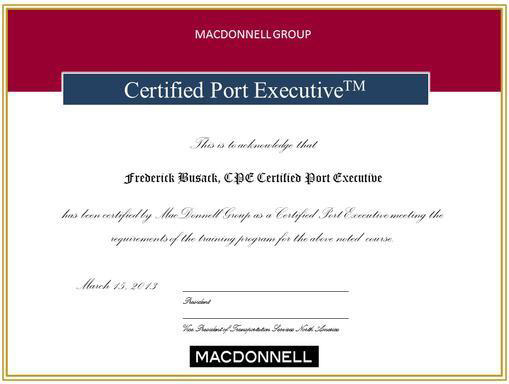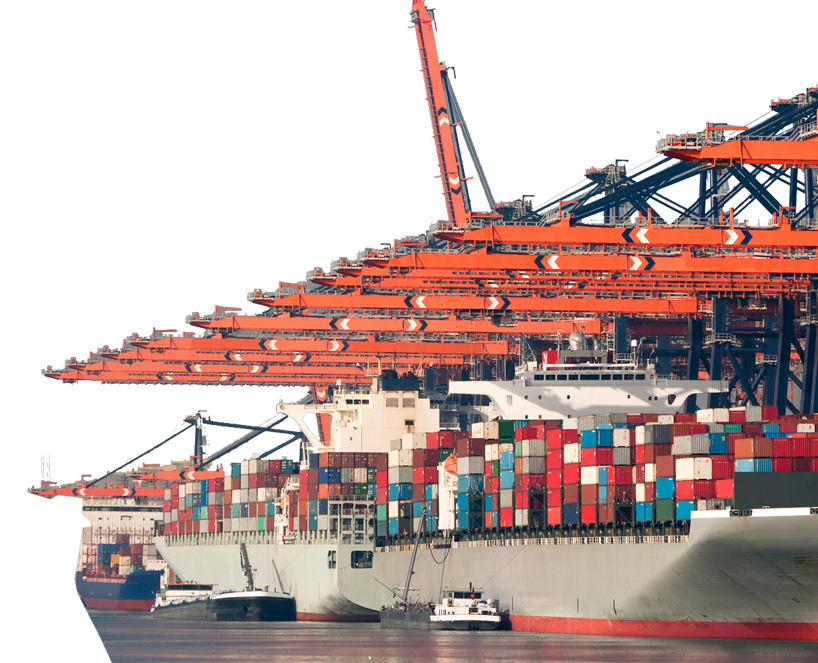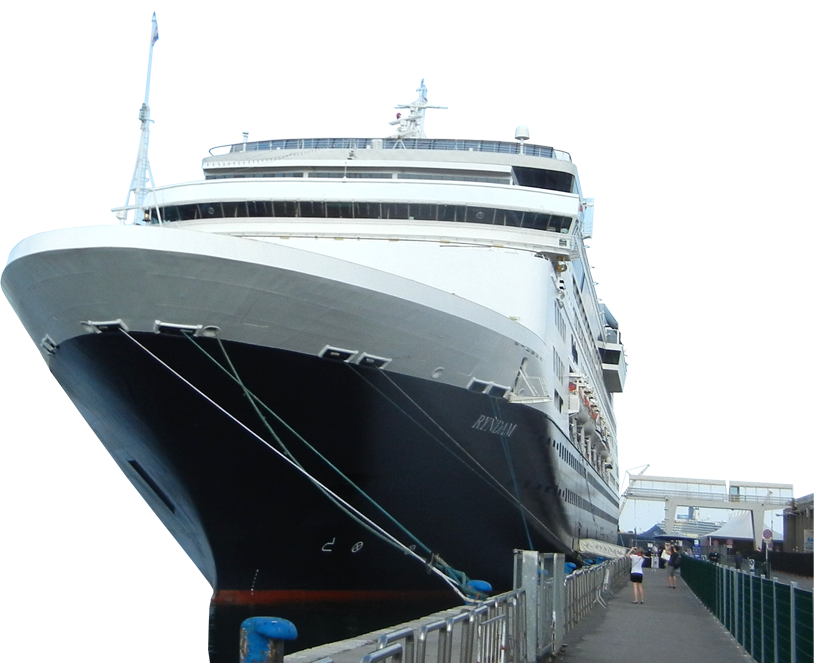Being CPE Certified Starts Here! Participants are provided professional education related to the transportation system and the operation of ports, vessels, and marine terminals.
Call Toll Free 24/7 to Register 866.219.6563
Day 1
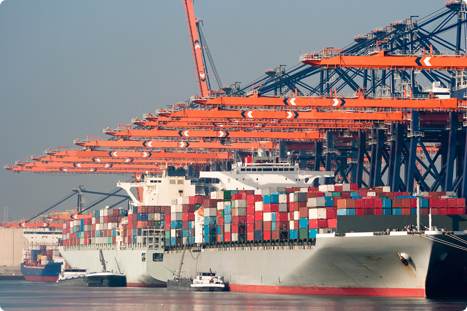
M1 · The Worldwide Transportation System
M2 · The International Port Industry
M2A · Language of the Industry
M3 · Port Governance and Management
M4 · The Marine Terminal
The Worldwide Commercial Transportation System

- The system in general
- Common modes of travel
- The intermodal route
- Regulatory checkpoints
- The logistics chain
- The shipper
- Freight forwarder/logistics planner
- Transportation
- Cost
- Regulatory oversight
- Consignee
- Industry professionals- cargo
- Ground transportation
- Marine
- Ships’ crews
The Port industry

- The maritime industry
- Most cost-effective
- Shipping statistics
- Transportation links
- Ports and the logistics chain
- Intermodal
- The Worldwide port industry
- 2011 top 15 North American – container port TEU rankings
- U.S. Port rankings
- Canadian port rankings-2011
- Trade corridors
- The coasts
- Great lakes and St. Lawrence
- Trade routes
- Types of ports
- Port ownership
- Port functions
- The port industry in the new millennium
- The 2008 economic cliff
- Since 2008-A slow climb back
- The industry’s other trades since 2008
- Recent US and Canadian port projects
- Port challenges
- The challenges-U.S. FMC study 2012
- Influences on ports
- Fleet changes
- Successful vs. Stagnant ports
- Examining our strengths – weaknesses
Language Of The Port industry

- Language of the port industry
- Proper terminology is critical
- Terms-port types
- Common terms used in the industry
- Types of cargo
- Typical neo-bulk cargoes
- Containerized cargo
- Container advantages
- The container
- Containers
- Throughput
- Tonnage
- Ship’s registered tonnage
- Lightweight tons
- Ship tonnage-gross tonnage
- Ship tonnage-net tonnage
- Ship tonnage-displacement
- The plimsoll mark
- The international load line
- Ship tonnage-cargo related
Port Governance And Management

- The port collective
- Public vs. private terminals
- Port management organizations
- Management – operation arrangements
- Public port governance
- Canada & U.S. Public port models
- Canada & U.S. Ports are symbiotic
- Canadian port industry
- Canada maritime act
- Canadian port authorities
- Other Canadian ports
- Canadian port divestiture
- U.S. Port governance
- U.S. Public port governance
- Types
- Municipal ports
- State ports
- State port councils
- U.S. federal ports
- State or municipal port commissions
- U.S. Port authorities
- Public ownership increased when industry changes forced a shift from the private sector
- Growth through necessity
- Preservation for new public use
- Old becomes new again
- Most effective goal is to meet both public and private needs
- Public vs. private management
- Management considerations
- Effective management
The Marine Terminal

- Objectives
- Purpose
- Classifications
- General purpose terminals
- Container terminals
- Roll on-roll off (RORO) terminals
- Dry bulk
- Liquid bulk terminals
- Break bulk
- Cruise terminals
- Ferry terminals
- Special purpose
- Military
- Non-marine terminals
- Terminal layout
- Air freight facilities
- Warehousing and transit facilities
- Value-added services
- LTL and consolidation
- Cargo trans-loading and dispersal
- Bonded storage
Day 2
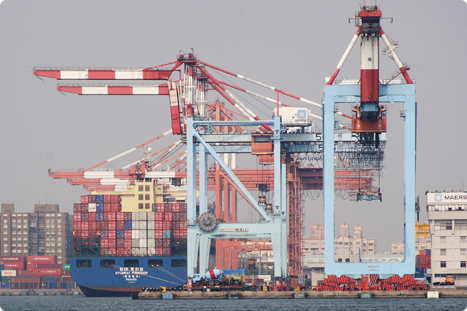
M5 · The Harbor and the Vessel Voyage
M6 · Marine Terminal Operations
M7 · Cargo Management
M8 · Transportation Pricing
M9 · Regulatory Requirements and Legal Issues
The Harbor And The Vessel Voyage

- Objectives
- The voyage
- Arrival requirements
- Port selection
- Definitions
- Commercial port geography
Maritime Terminal Operations

- Marine terminal functions
- Operational parameters and focus
- Operational objectives
- Cargo management
- Ancillary activities
- Terminal functionality
- Vessel handling
- Cargo handling vessel to/from terminal
- Cargo handling cycle
- Equipment
- Cargo handling equipment
- Gantry cranes
- Mobile harbour cranes
- Yard gantry cranes
- Straddle carriers
- Reach stackers
- Top loaders
- Spreaders
- Yard hustlers
- Computer based terminal operating systems
- Outbound processing
- Vehicle and cargo inspection system
- Cargo storage
- On dock rail
- Marine terminal shore side operations
- Port and vessel operations
Cargo Management

- Concepts of cargo management
- Cargo classifications
- The ocean bill of lading-B/L
- B/L basic types
- Customs regulations
- Commercial invoice
- Government invoice
- Certificate of origin
- Regulatory agencies
- Security agencies
- Pre-arrival review system (PARS)-Canada
- TIR-EIR (trailer or equipment interchange receipt)
- Cargo protection
- The stowage plan
- Planning the stow
- Packing and stacking
- Theft
- Cargo surveys
- Cargo claims
- Parties that handle cargo
- Booking cargo
- Carrier tariffs
- The common carrier
- Freight forwarders
- Customs house brokers
- NVOCC
- Vessel chartering
- Types of charter parties
- Standardized charter parties
- Charter party terms
- Detention & per diem
- Demurrage
- General average
- Logistics interruptions
Transportation Pricing

- Transportation costing
- Rates and costs are generally based on volume
- The shipper generally bears the cost
- Shipper base costing
- The logistics plan
- Logistics considerations
- Ocean shipping modes
- Ships
- Ocean going barge
- Selecting options
- Base rates
- Special rates
- Other rate structures
- Costs just seem to keep stacking up
- Common pricing mistakes
- Terms of sale
- F.A.S.-Free alongside ship
- F.O.B.-Free on board
- Origin-freight collect
- Port selection
- Petroleum is easiest to price
- Trucks
- Moving cargo is about details
Regulatory requirements and legal issues
Major requirements

- International regulations
- International obligations
- Outgoing vessels
- Incoming vessels
- Legislation
- Acts – general operations
- Acts – security and shipping
- Legislative process
- Regulation and measures
- General maritime regulations
- TAT jurisdiction
- Judicial impacts
- Federal court
- Where to be heard
- Canadian Human Rights Commission
- International
- Cargo damage disputes
- Disputes
- Military cargoes
- The enforcers
- Canada
- United states
- National transportation system restoration plan
- Common legal issues
Day 3
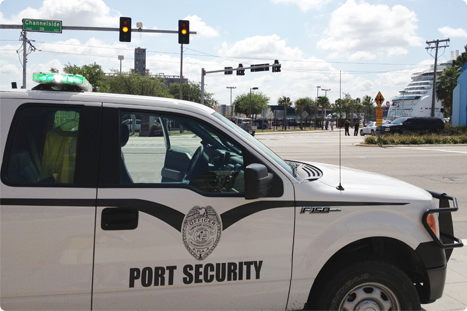
M10 · Tariffs, Terminal Regulations and Operating Plans
M11 · Safety and Security
M12 · Emergency Planning and Response
M13 · Business Development and Marketing with Panning Discussion
Tariffs, terminal regulations and operating plans
The Tariff

- What’s in a tariff?
- Tariff is an implied contract
- Content
- Purpose
- Scope and application
- Rights of port or terminal
- Insurance
- Control of vessels
- Control of cargo
- Control of property
- Hazardous materials – hazmat
- Other provisions in the tariff
- Rates and charges
- Dockage or berthage
- Wharfage
- Free time
- Demurrage (above free time)
- Miscellaneous charges
- Terminal rules and regulations
- Operating plans
- Types
- Composition
Safety and Security

- US and Canada objectives
- CBSA
- USCBPS
- Core efforts
- Food and agricultural responsibility
- Civilian and military treated similar
- Inspections – inbound and outbound
- Major focus
- Applies to
- Port security and port security plans
- Enforced by flag state regulatory agencies
- Port security planning
- Port security plans
- Terminal and facility security plans
- Marine terminal security plans
- Vessel security plans
- Port security plan application
- Port and terminal safety plans
- Causes of accidents
- Safety regulations
- How plans are developed
- Integration into practice
- Regulators
- Canada: Transport Canada MTSR
- US: MTSA: Coast Guard 33CFR
- Facilities
- 100% of port workforce requires training
- Vessels
- 100% of port workforce requires training
- Portstar
- MARAD approved port training system
- Developed with DHS funding to realize a 100% of port workforce trained
- Training options: instructor led, online, or blended learning
Emergency planning and response

- Objectives
- Emergency management
- Goals
- Port emergency plan
- Common topics
- Common elements
- Ports that handle specialized cargo need customized plans
- Privacy concerns
- Spans of control
- Common agreements
- Incident command system
- ICS functions
- ICS incident commander
- ICS command staff
- Incident command structure
- Incident command center
- ICS advantages
- Priority of work
- Post incident restoration
- Unity of command
- Unified command structure (UCS)
- Span of control
- Public relations
- Safe port marketing
- The media
- Role of the ports
- Role of the port executive
- Role of drills and exercises
- Drill participation
- National transportation system restoration plan
- Summary
Business development and marketing

- Objectives
- The success of a port is based on a diverse economic mix
- Fundamentals
- Business development
- Development role
- Success is based on best utilization of current assets
- Utilization
- Port planning and development
- Planning principles
- Community planning
- Planning is the high altitude view
- Incorporates reasonable investment
- Requires stakeholder relationships
- Must be customer satisfaction oriented
- Is the result competitive and price sensitive
- Utilizes targeted marketing
- Marketing
- Different than sales
- Marketing foundations
- Marketing tools
- Cyberspace
- Media
- The personal relationship is a very effective marketing tool
- Tracking your efforts
- Questions to ask
- Measurements
Day 4
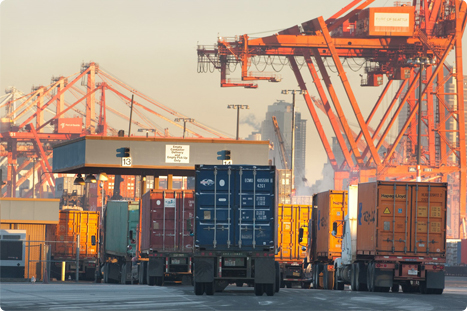
M14 · Port and Facility Management
M15 · Administration and Finance
M16 · Public and Media Relations
M17 · Strategic and Master Planning
Port and facility management

- Property management
- Facility management
- Ports are part of the larger community
- The perception? Ports are just a bunch of docks
- For every pier there needs to be supporting upland
- Upland terminal requirements
- Open piers are most flexible
- Length of ship plus length of lines bow & stern
- Container terminals use
- Numbered grids for box staging
- Access and expansion
- Water access-expansion
- Shallows can be filled
- Incorporate support services
- Value-added services
- Get involved with roadway planning
- Major off-property port considerations
- Risk management of marine infrastructure assets
- The issues
- Common problems
- Implications – legal & financial
- Key components of successful property management
Administration and finance

- Cost is key
- Fixed costs
- Variable costs
- Port efficiency impacts costs
- Shipper costs
- Costs are most affected by labour
- The way ports and facilities are managed impacts costs
- Facility Management
- Management Arrangements
- Management
- Staff functions and goals
- Who manages the port
- The port director
- Deputy port director
- Operations manager
- Manager of administration and finance
- Marketing manager
- Manager of regulatory compliance
- Manager of security
- Terminal management
- Terminal Staffing
- Terminal manager
- HR director
- Budget and finance manager
- Procurement manager
- Communications and technology manager
- Other admin staff
- Marine manager
- Other Ops staff
- Support staff
- Port finance
- Sample terminal budget
- Management and labour
- Stevedore-longshoremen
- The longshoring gang
- Contracts
- Largest NA unions
- A&F summary
Public and media relations

- What is public relations
- The port’s public
- The general public
- Public as stakeholders
- What is a crisis?
- Possible crisis
- Activists fuel crisis
- The image of the port
- Concern for the environment
- The port and marine environment
- Why a crisis has legs
- The news needs news
- News outlets are an effective vehicle
- You cannot turn a bad story into a good story but you can compete for attention
- Negative publicity often leads to knee-jerk reactions
- Negative press
- The slippery slope
- Litigation
- The public relations response plan
- Make media contacts
- Working with the media
- The media conference
- The opening statement
- Some other key points
- Be prepared for other than the press
- Consider direct initiative
- Manage information
- Understand the mode
- Best results
- Some news is good news
Strategic and master planning

- Planning is the foundation of management
- Types of planning
- What is the difference?
- Strategic planning is setting goals for the port organization
- Purpose of strategic planning
- Purpose of master planning
- Transportation/logistics planning
- Cargo planning
- Overall planning concepts
- Plan development
- Port planning is broad
- Terminal planning is very specific
- The terminal plan
- Intermodal terminals
- Intermodal terminal development
- Intermodal terminal evolution
- All terminals function the same way
- Throughput and yield
- Communities can limit terminal use
- Executing the plan
- Engaging the planners
- Good public information and education is the key
- Undertaking the planning process
- Develop a conditional survey of facilities
- Compare the historic trends to potential and perspective business
- Develop infrastructure plans
- Secure funding
- Create benchmarks
- Understand how to use consultant(s)
- The master plan process
- Define objectives
- Identify strengths and weaknesses
- Business analysis and development plan
- Develop a strategic plan
- Include the required details Product: strategic action plan and implementation schedule
- Year one action items
- Year one to five action items
- 5-10 year action items
- 10 + year action items
Trends

- Automation and Climate Change in Seaport and Terminal Operations
Day 5

Module 18 Trends, Automation and Climate Change
Practical Exercise and Evaluation
Awarding of Certificates
| DAY 1 | DAY 2 | Day 3 | Day 4 | Day 5 |
|---|---|---|---|---|
| The Worldwide Transportation System | The Harbour and the Vessel Voyage | Tariffs, Terminal Regulations and Operating Plans | Property and Facility Management | Trends, Automation and Climate Change |
| The International Port Industry | Marine Terminal Operations | Safety and Security | Administration and Finance | Practical Exercise and Evaluation |
| Language of the Industry | Cargo Management | Emergency Planning and Response | Public and Media Relations | Awarding of Certificates |
| Port Governance and Management | Transportation Pricing | Business Development and Marketing with Planning Discussion | Strategic and Master Planning | |
| The Marine Terminal | Regulatory Requirements and Legal Issues |
WHY THE CPE PROGRAM
-
-
- Enhanced management skills to bring back to your terminals, ports or maritime operations
- Real world knowledge of port and terminal operation and management
- Tools and knowledge to be able to advance your career
- Interconnectedness with a global network of port management professionals
-
The CPE Certified Port Executive™ Program is registered trade mark of MacDonnell Group
